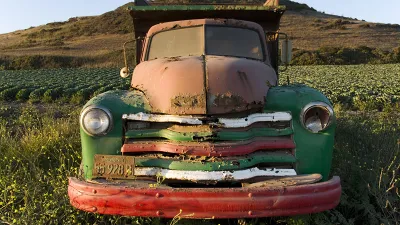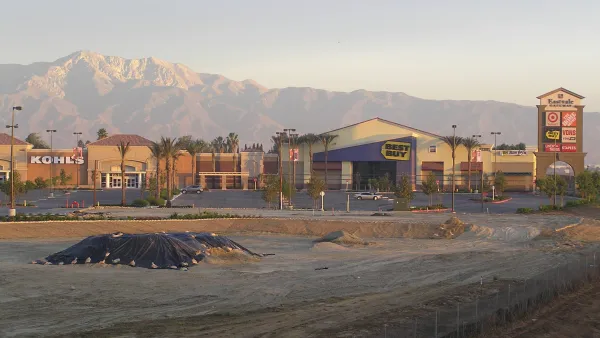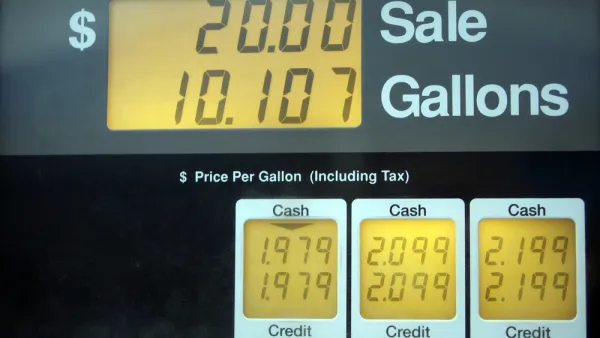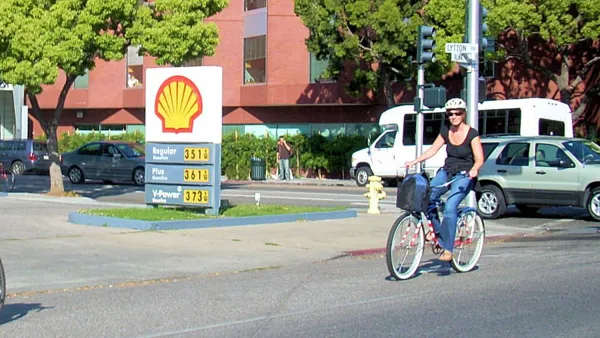An old wound is mitigated thanks to two Democratic legislators from Riverside County who made it clear from the onset what it would take for them to sign-on to the Road Repair and Accountability Act, California's historic fuel tax and fee increase.

Fiscally-conscious Californians may recall one of the issues that actor Arnold Schwarzenegger successfully exploited to boot Gov. Gray Davis in the 2003 recall. The state was broke and Davis had restored the vehicle license fee (VLF) from 0.65 percent of vehicle value to the original 2 percent, permitted by the 1998 law that Gov. Pete Wilson had signed when he lowered it. [See George Skelton's 2011 piece in the Los Angeles Times.]
Gov. Schwarzenegger kept his promise to the voters, signing "his first Executive Order repealing a 300% increase in the 'car tax' (vehicle license fee)." The VLF reverted to 0.65 percent where it has stayed ever since. In so doing, the state incurred a $6 billion structural imbalance that Gov. Brown inherited, as Skelton explained.
Fast forward to 2011 and the passage of SB 89 that redirected $130 million in vehicle-license fees earmarked for municipalities to close the state’s $25 billion budget gap, which would prove financially devastating to the state's four newest cities, all in Riverside County. "This bill caused the loss of 47% of its expected revenue in its first year as a city,'" according to Jurupa Valley Mayor Verne Lauritzen," notes a 2013 post. The bill was signed by Gov. Brown.
Jurupa Valley, a city of 98,000, incorporated in 2011, had initiated the process of disincorporation in January 2014 (which it discontinued after a bill brought financial relief the next year), which brings us to the present and the passage on April 6 of the landmark Road Repair and Accountability Act of 2017, SB 1 (Beall).
Jeff Horseman of the Riverside-based Press-Enterprise takes it from here.
Two Inland state lawmakers leveraged their reluctance toward the governor’s transportation bill into close to half a billion dollars for Riverside County and the return of money to cities that lost it six years ago. Assemblywoman Sabrina Cervantes (D-Corona) and Sen. Richard Roth (D-Riverside) stuck a deal that secured their crucial ‘yes’ votes.
Officials from the governor’s office met behind closed doors with Roth and Cervantes; Roth said he met with the governor and Senate President pro Tem Kevin de León, D-Los Angeles. The deal was stuck before the Senate voted 27-11 to pass SB 1.
In exchange, Riverside County, where elected leaders have long complained of neglect from Sacramento, is getting $427 million for transportation infrastructure, above and beyond what’s ticketed for road repair.
Also, Menifee [incorporated 2008], Wildomar [inc. 2008], Eastvale [inc. 2010] and Jurupa Valley are getting back revenue from vehicle license fees taken by state lawmakers in 2011, a crippling blow at the time to the four fledgling cities.
The four cities will receive "$15 million a year, according to Roth’s office" to make up for the lost vehicle license fee money beginning in 2011 with Brown's signing of SB 89.
Time and again, Roth-sponsored bills to restore the fees sailed through the legislature before being vetoed by Brown, who cited the need to stop siphoning money from the state’s general fund. The governor in 2015 OK’d a stop-gap measure to relieve the four cities’ debt. [That was SB 107 that enabled Jurupa Valley to discontinue disincorporation].
Roth's current bill, SB 37, adjusts the VLF formula to restore funding to cities.
Horseman goes on to describe the Riverside County road projects that are listed in a budget trailer bill, SB 132, along with the rail and road projects described earlier that benefit the ACE train and Campus Parkway between UC Merced and Highway 99 thanks to deal-making by Sen. Anthony Cannella (R-Ceres) and Assemblyman Adam Gray (D-Merced).
The Road Repair and Accountability Act of 2017 has no such earmarks, or as SB 1 author Sen. Jim Beall (D-San Jose) calls them, "funding arrangements" in this Los Angeles Times article on the side-deals.
The landmark infrastructure bill is all about where the funds come from, e.g., taxes and fees, and what programs, e.g., road, transit, and active transportation they fund. As the name implies, road money goes mostly to "Fix-it First" programs, split 50-50 between state and local sources.
Here's the breakdown listed in the governor's news release of March 29:
The legislation, the Road Repair and Accountability Act of 2017, SB 1 (Beall), invests $52.4 billion over the next decade - split equally between state and local investments:
Fix Local Streets and Transportation Infrastructure (50 percent):
- $15 billion in "Fix-It-First" local road repairs, including fixing potholes
- $7.5 billion to improve local public transportation
- $2 billion to support local "self-help" communities that are making their own investments in transportation improvements
- $1 billion to improve infrastructure that promotes walking and bicycling
- $825 million for the State Transportation Improvement Program local contribution
- $250 million in local transportation planning grants.
Fix State Highways and Transportation Infrastructure (50 percent):
- $15 billion in "Fix-it-First" highway repairs, including smoother pavement
- $4 billion in bridge and culvert repairs
- $3 billion to improve trade corridors
- $2.5 billion to reduce congestion on major commute corridors
- $1.4 billion in other transportation investments, including $275 million for highway and intercity-transit improvements.
Also see Metropolitan Transportation Commission April 7 new release and 1-page fact sheet (pdf) for additional breakdown on the source of the act's new revenues and the programs funded.
FULL STORY: Here’s how a transportation bill side deal got $427 million for Riverside County

National Parks Layoffs Will Cause Communities to Lose Billions
Thousands of essential park workers were laid off this week, just before the busy spring break season.

Retro-silient?: America’s First “Eco-burb,” The Woodlands Turns 50
A master-planned community north of Houston offers lessons on green infrastructure and resilient design, but falls short of its founder’s lofty affordability and walkability goals.

Delivering for America Plan Will Downgrade Mail Service in at Least 49.5 Percent of Zip Codes
Republican and Democrat lawmakers criticize the plan for its disproportionate negative impact on rural communities.

Test News Post 1
This is a summary

Test News Headline 46
Test for the image on the front page.

Balancing Bombs and Butterflies: How the National Guard Protects a Rare Species
The National Guard at Fort Indiantown Gap uses GIS technology and land management strategies to balance military training with conservation efforts, ensuring the survival of the rare eastern regal fritillary butterfly.
Urban Design for Planners 1: Software Tools
This six-course series explores essential urban design concepts using open source software and equips planners with the tools they need to participate fully in the urban design process.
Planning for Universal Design
Learn the tools for implementing Universal Design in planning regulations.
EMC Planning Group, Inc.
Planetizen
Planetizen
Mpact (formerly Rail~Volution)
Great Falls Development Authority, Inc.
HUDs Office of Policy Development and Research
NYU Wagner Graduate School of Public Service





























